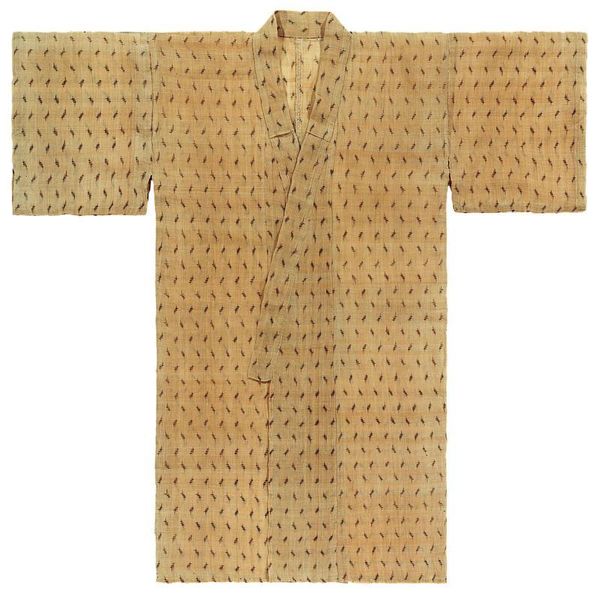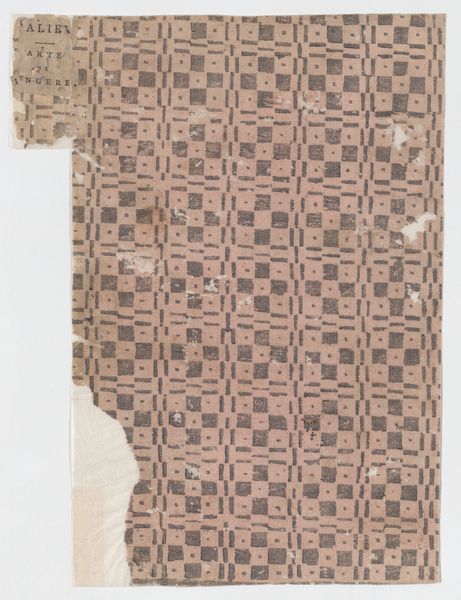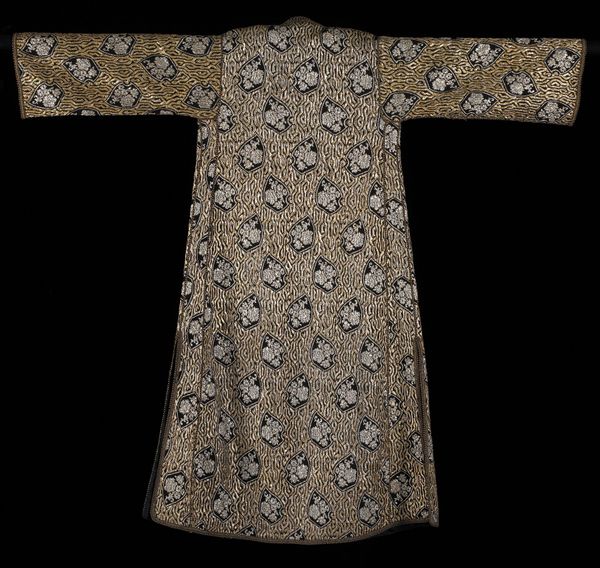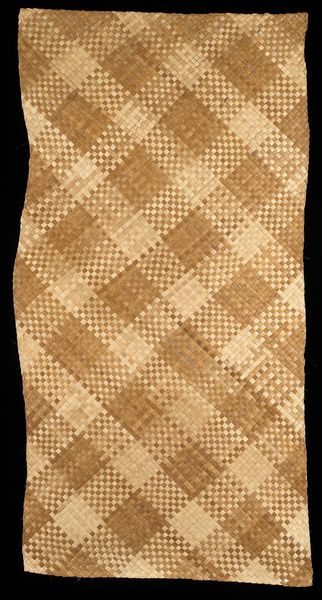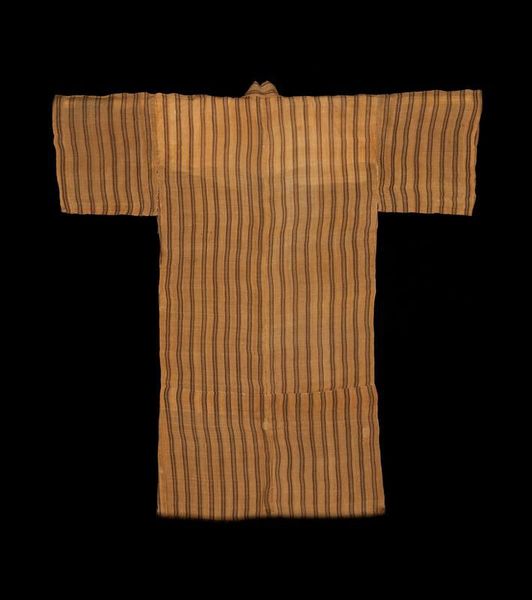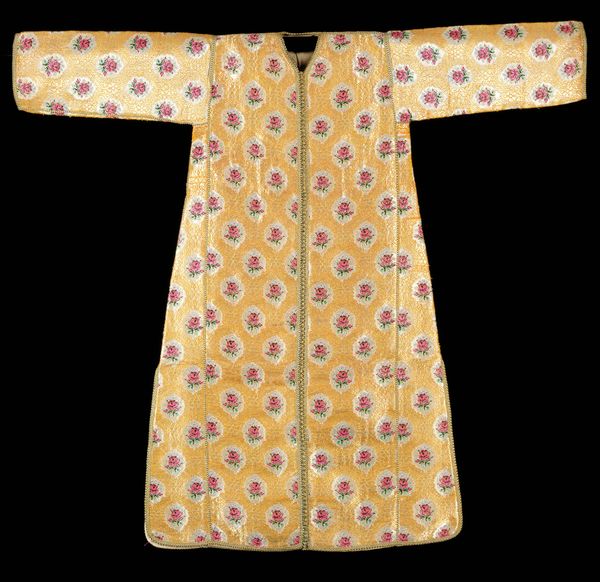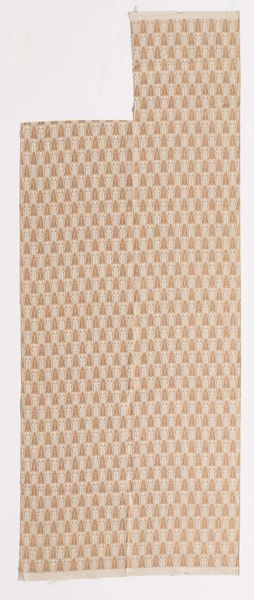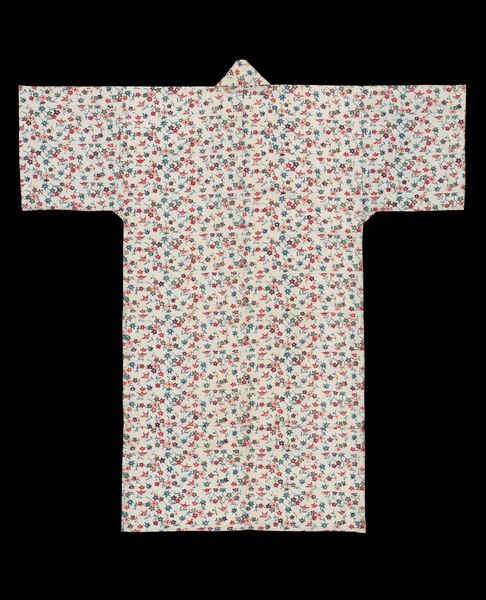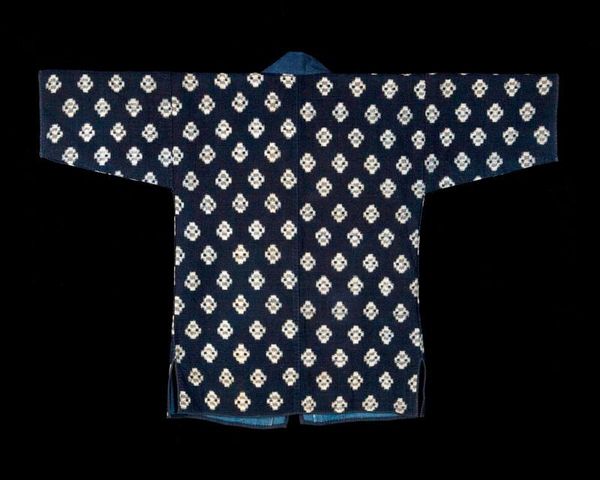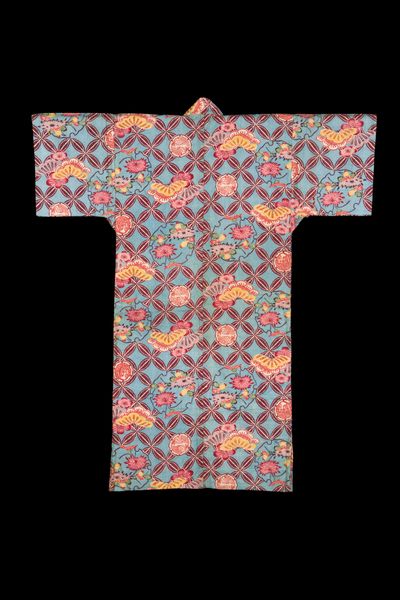
Light brown-ground kimono with connected double lozenge pattern late 19th-early 20th century
0:00
0:00
silk, weaving, textile
#
natural stone pattern
#
silk
#
asian-art
#
weaving
#
textile
#
fashion and textile design
#
hand-embroidered
#
repetitive shape and pattern
#
geometric
#
repetition of pattern
#
regular pattern
#
pattern repetition
#
textile design
#
decorative-art
#
imprinted textile
#
layered pattern
Dimensions: 55 1/8 × 47 1/2 in. (140.02 × 120.65 cm) (overall)
Copyright: No Known Copyright
This kimono, made with a light brown ground and connected double lozenge pattern, presents a fascinating intersection of aesthetics and social meaning. Its anonymous creation underscores a critical aspect of folk art: the erasure of individual authorship in favor of communal expression. In Japan, textiles like this were not simply garments but carriers of cultural identity. The lozenge pattern, a recurring motif, might signify family lineage, social status, or even regional affiliation. But without knowing the precise era or intended wearer, interpreting this kimono becomes an exercise in social history. Museums, like this very institution, play a crucial role in preserving and presenting such artifacts, yet they also shape our understanding through curatorial choices and contextual narratives. By studying similar examples, archival records, and historical accounts, we can begin to reconstruct the world of this kimono and appreciate its place within a complex web of social relations.
Comments
minneapolisinstituteofart almost 2 years ago
⋮
This kimono is a testament to the distances textiles sometimes travel and the creative transformations they undergo through the work of many hands. Woven in Okinawa from banana bast fiber, the light, breathable cloth was likely intended for export to the Japanese mainland, where such luxe fabric was prized. The connected double-lozenge pattern, a mainland motif achieved through a stencil resist-dyeing technique called katazome, might have been added there later. Ironically, the pattern imitates kasuri (or ikat)—an Okinawan technique. In the last step of its transformation, the cloth was cut and sewn into a form typical for Japanese kimono with long, free-hanging sleeves.
Join the conversation
Join millions of artists and users on Artera today and experience the ultimate creative platform.
